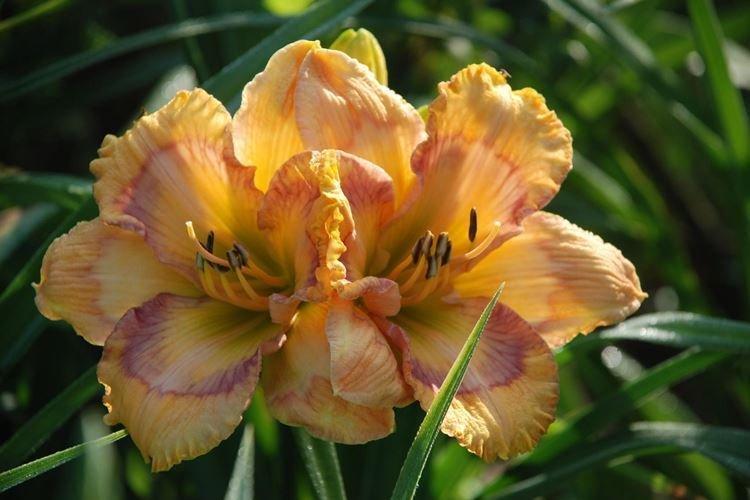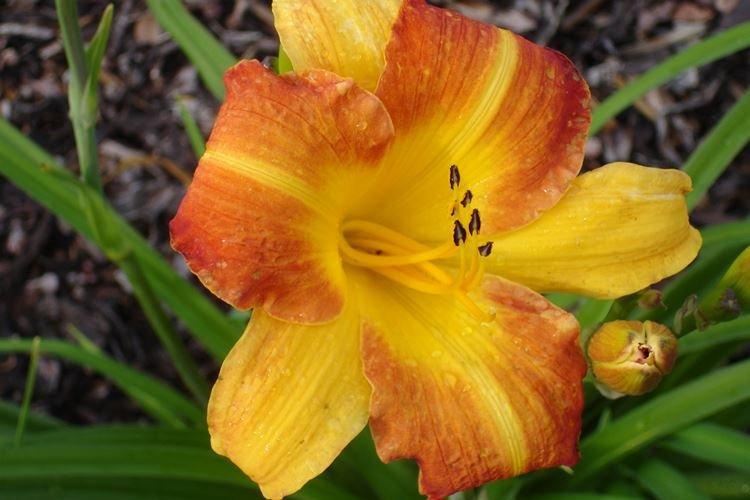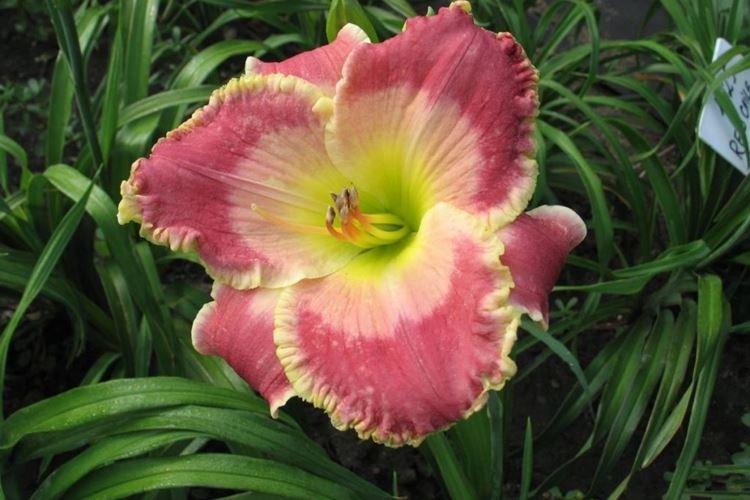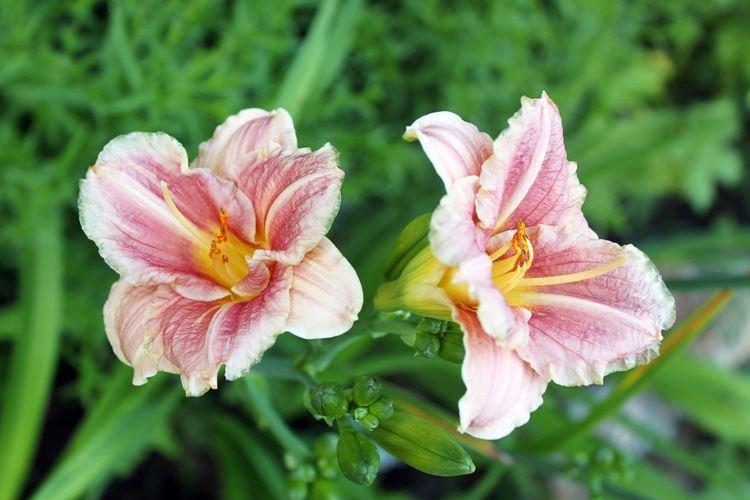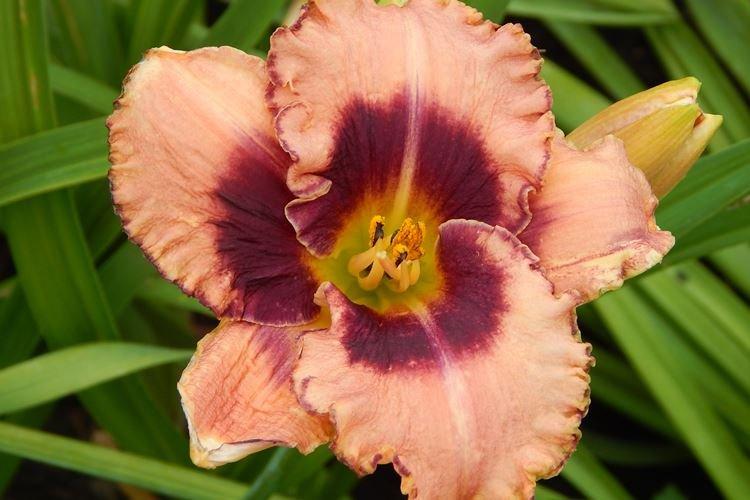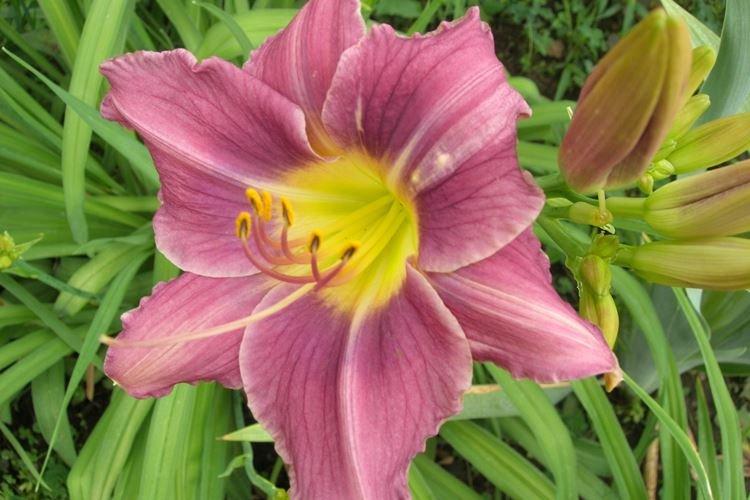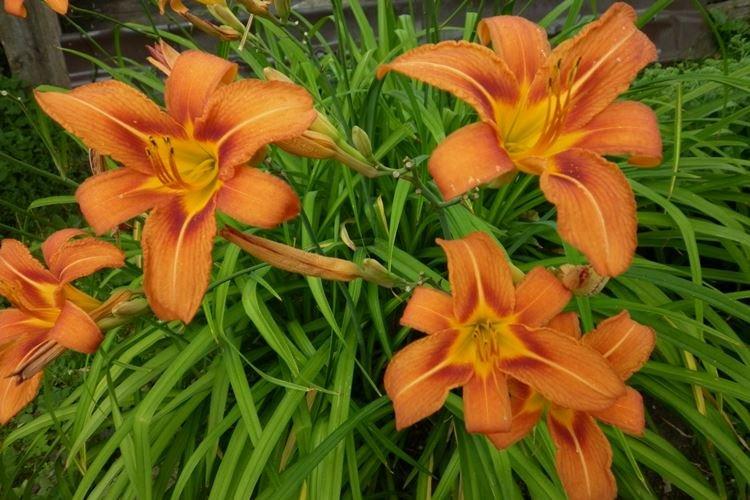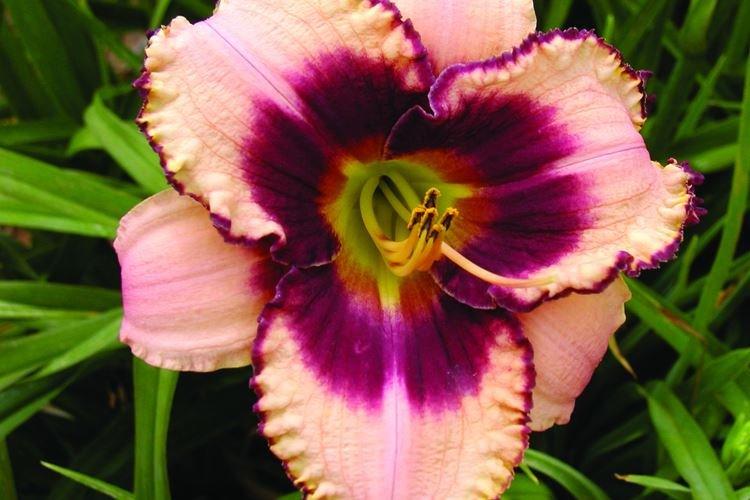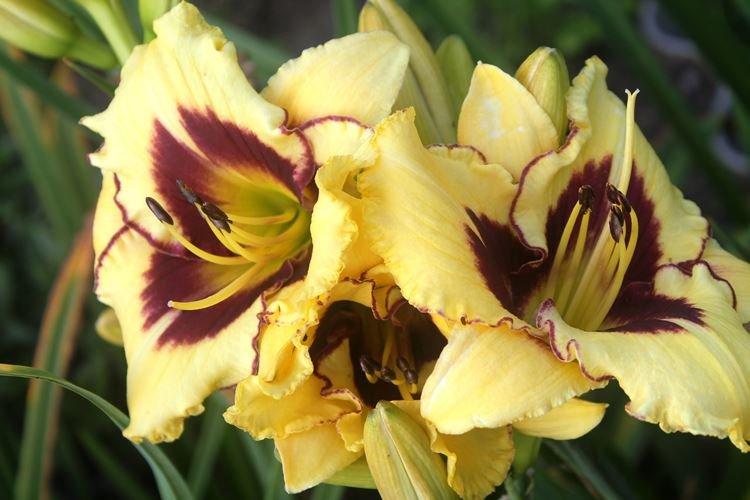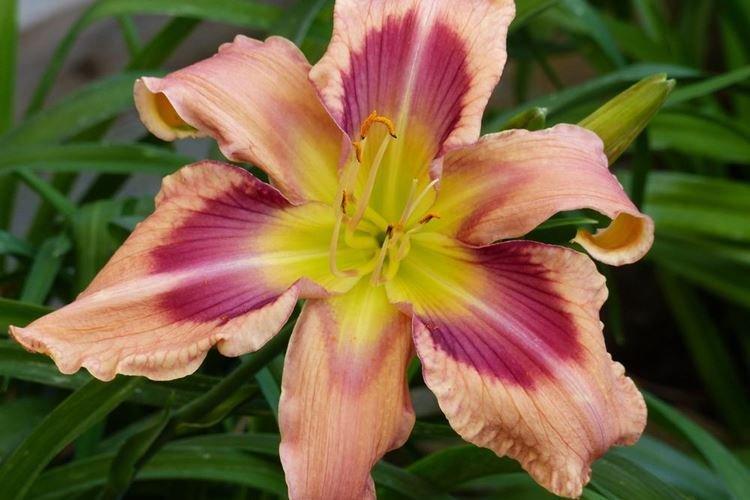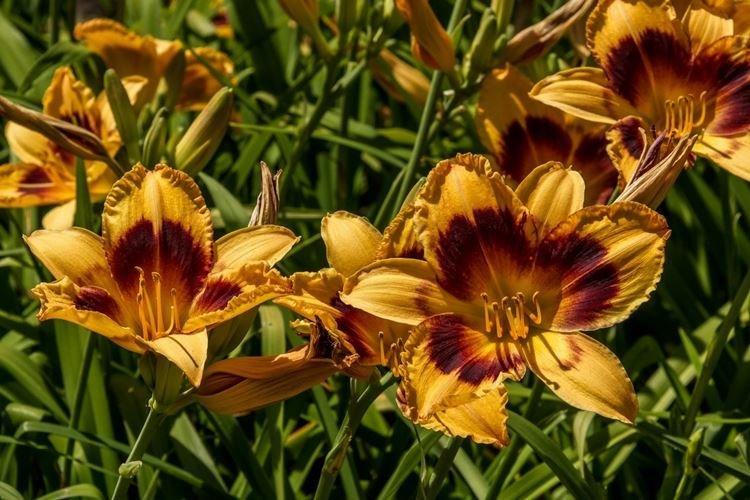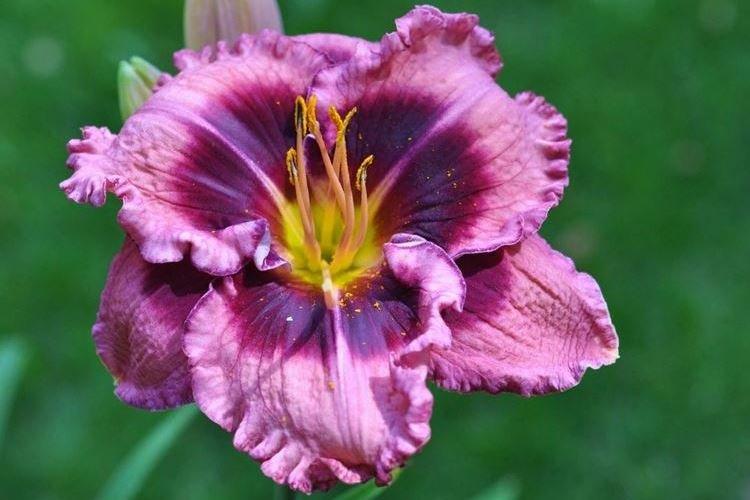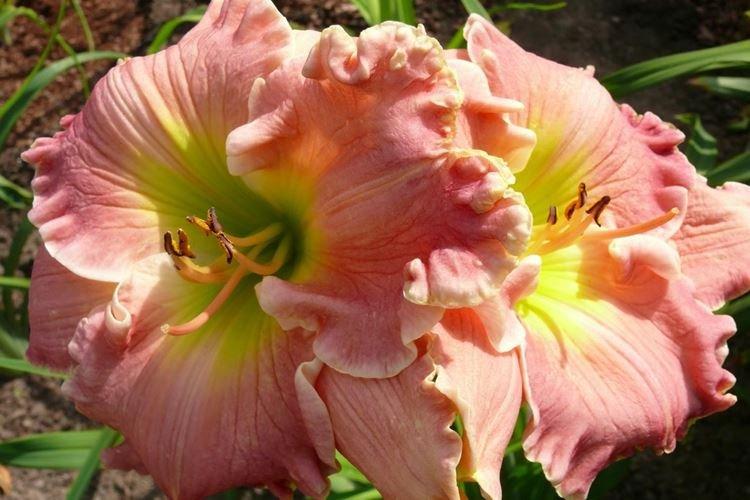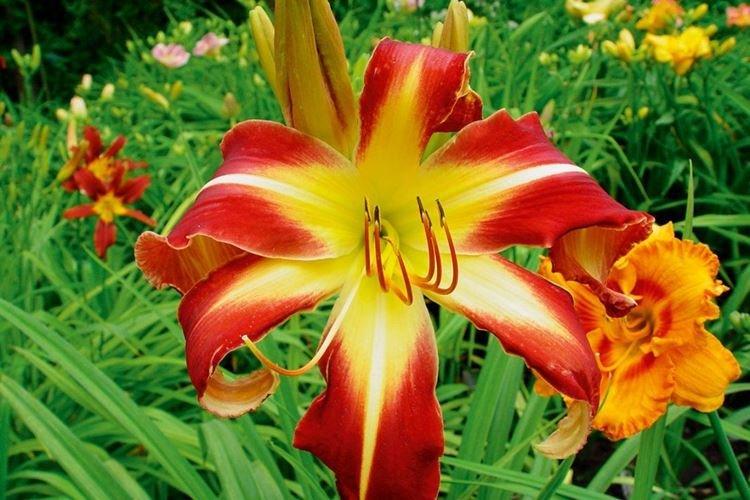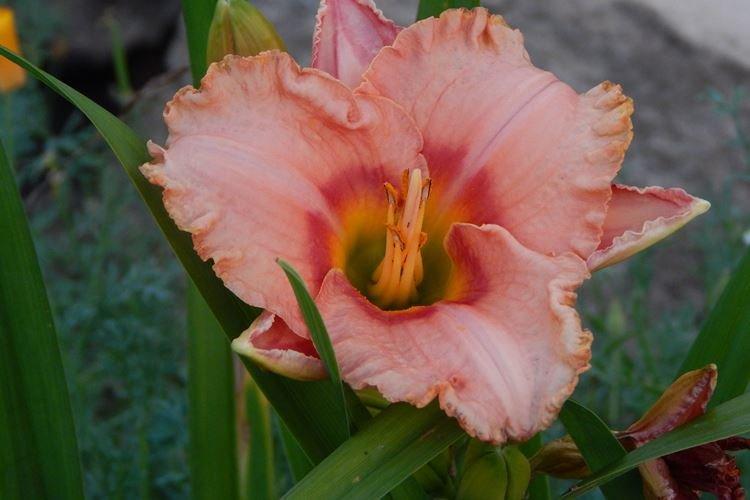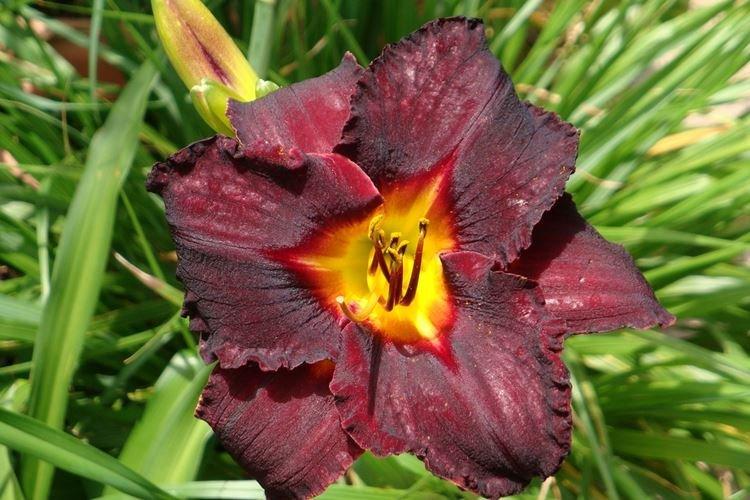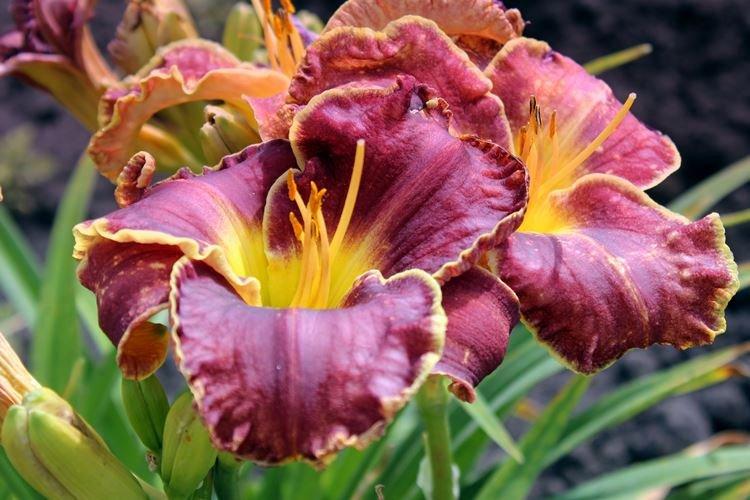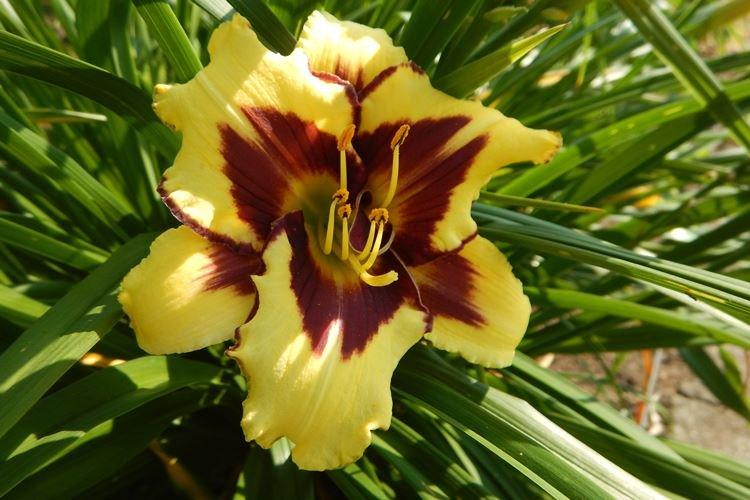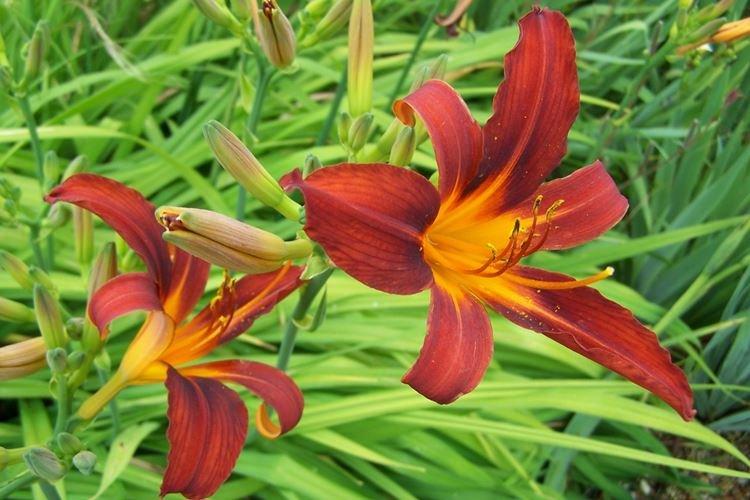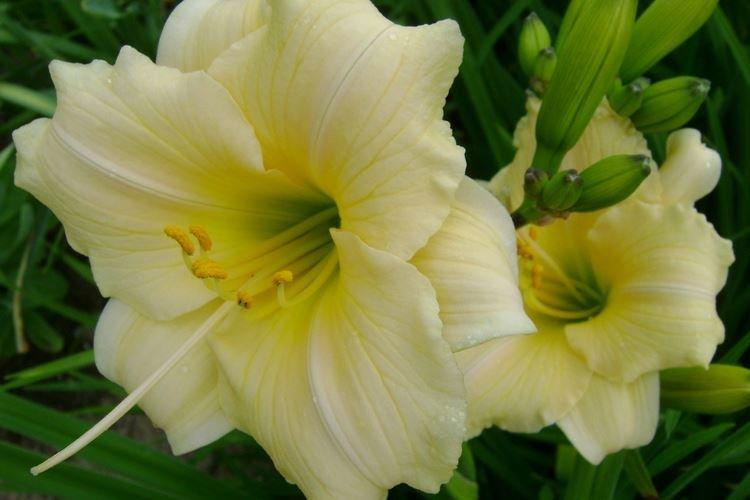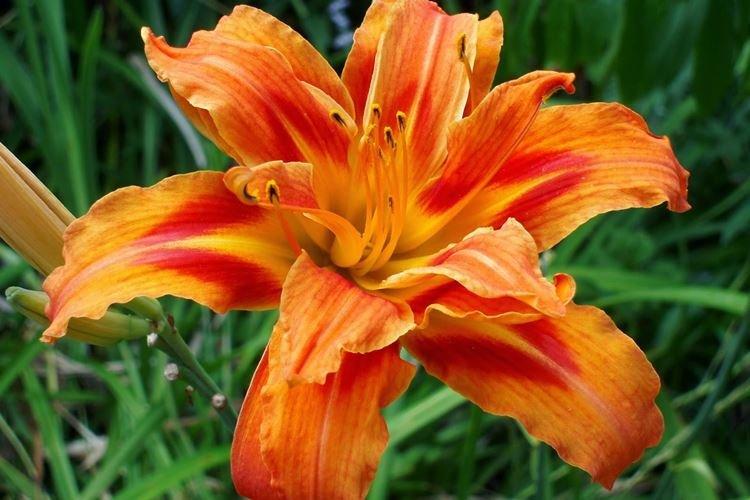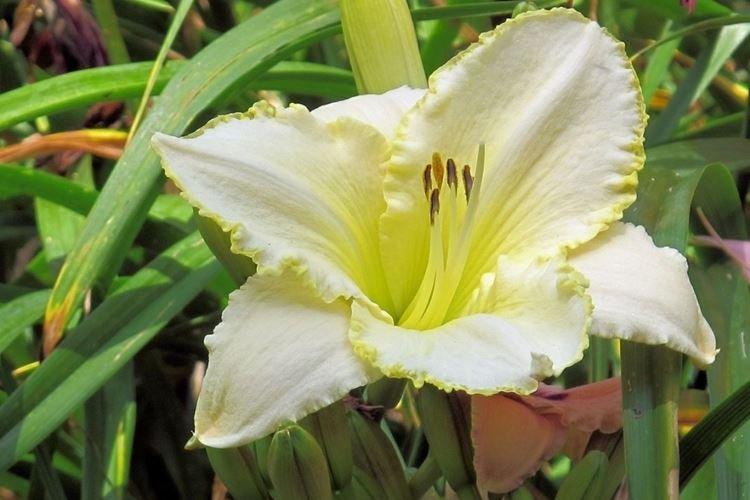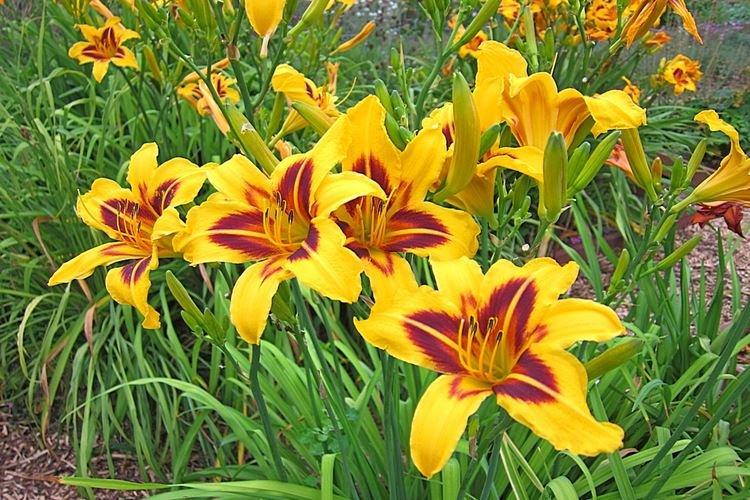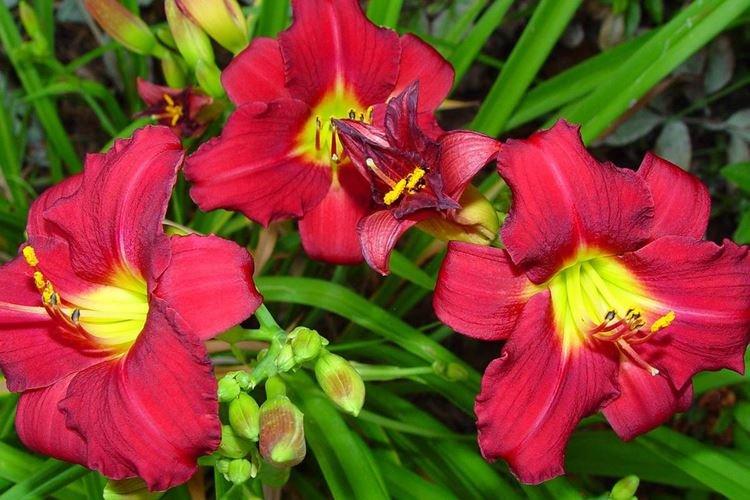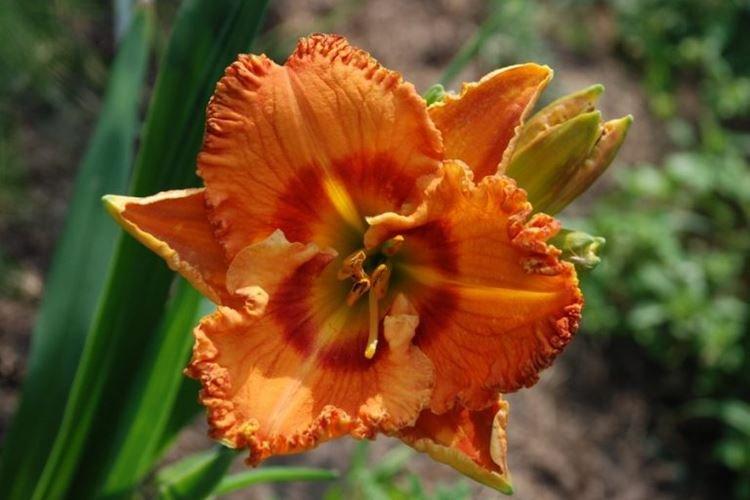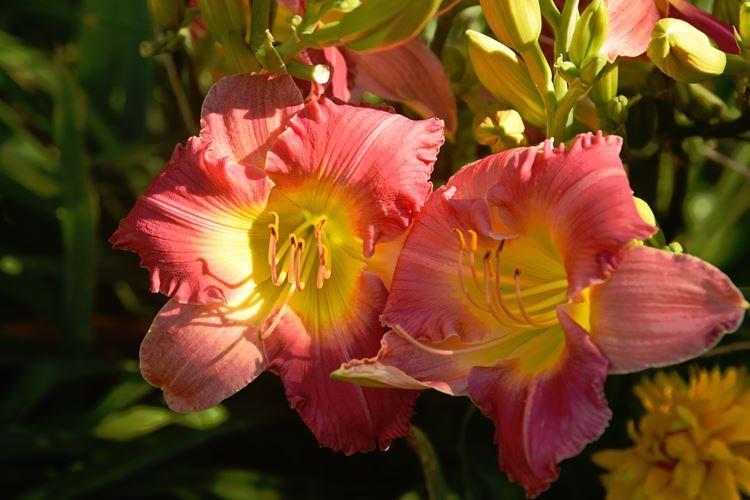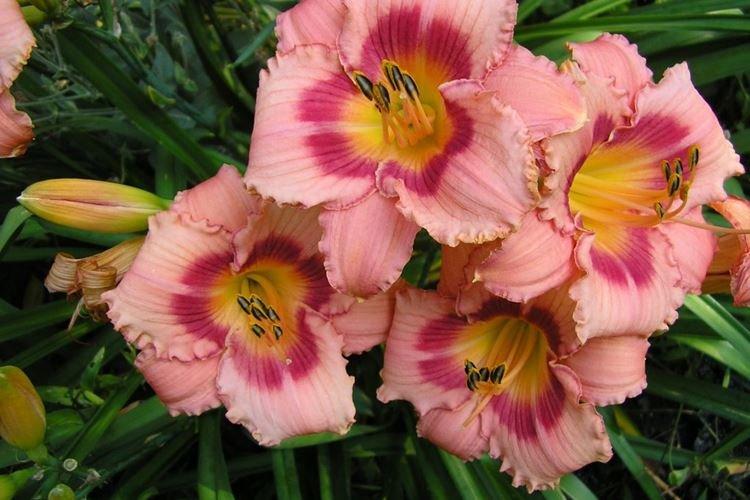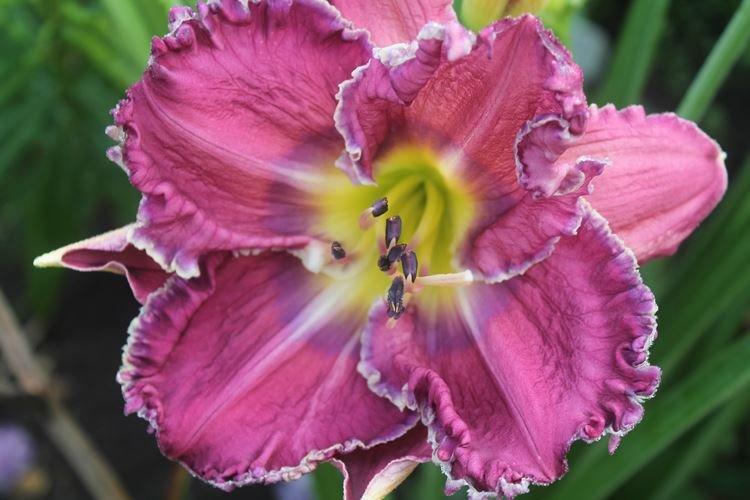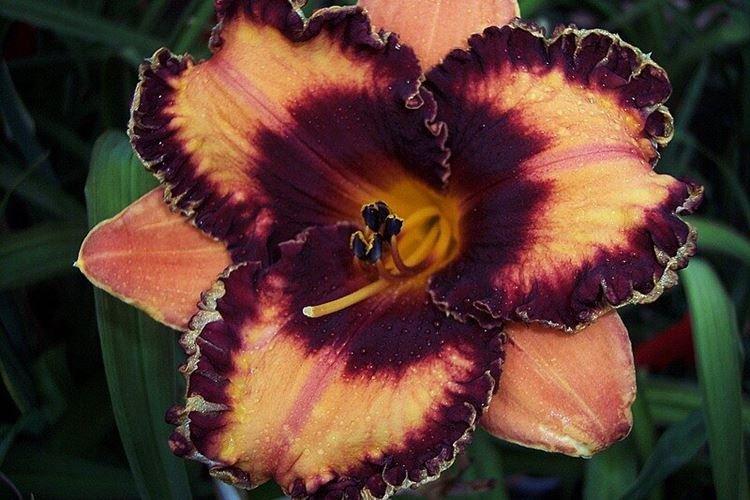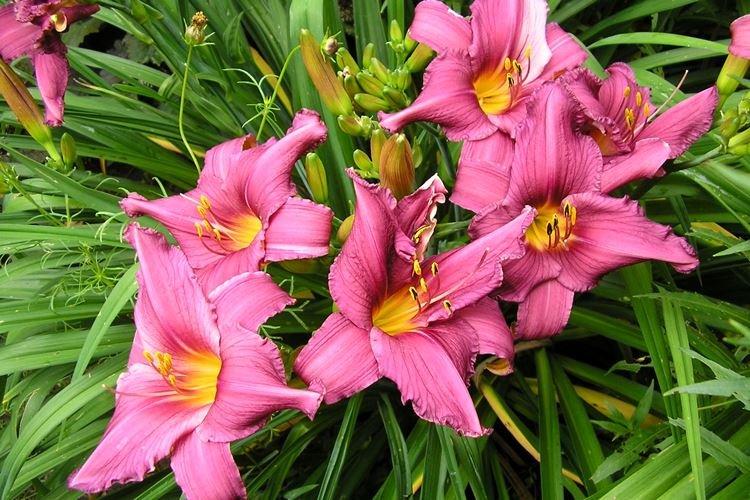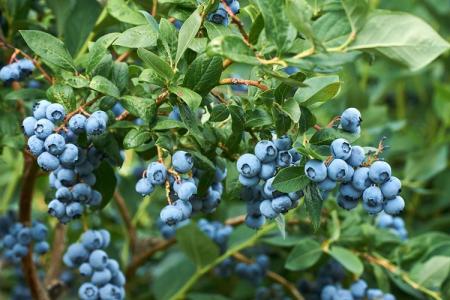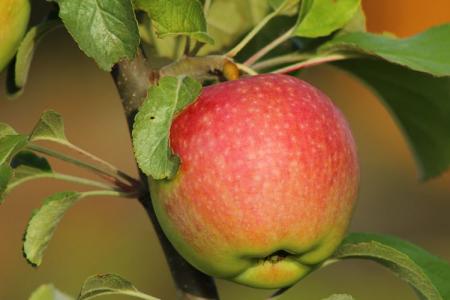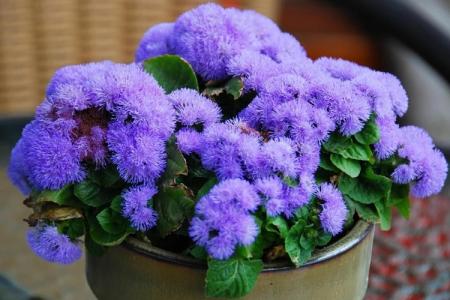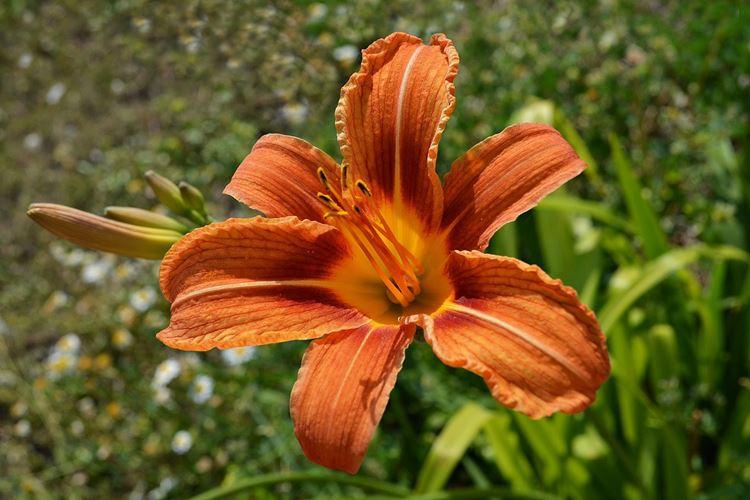
Many people mistakenly confuse the daylily with the lily because of its name and the characteristic shape of the flowers. In fact, this is a completely different family and a different plant, which is also called "hemerocallis". For its magnificent decorative properties and exceptional unpretentiousness, it has long and confidently taken root in our gardens!
general information
Unlike lilies, daylily flowers are ephemeral, but there are a lot of them, so each bush blooms for several months. For this feature and an expressive orange-red hue, the people call the daylily also "beautiful day".
The daylily also differs from the lily in the rhizome - it is a herbaceous perennial with a powerful and developed root system. It is very thick and fleshy, making it easy to survive drought. Large funnels of flowers open on high peduncles, up to a meter.
The daylily has pointed, elongated leaves with a bluish tint, and some of the varieties remain evergreen under favorable conditions. Many peduncles grow on one bush at once, so they are enough for several months. Such a shrub lives up to 15 years and is widely used in group plantings, mixborders or when decorating fences.
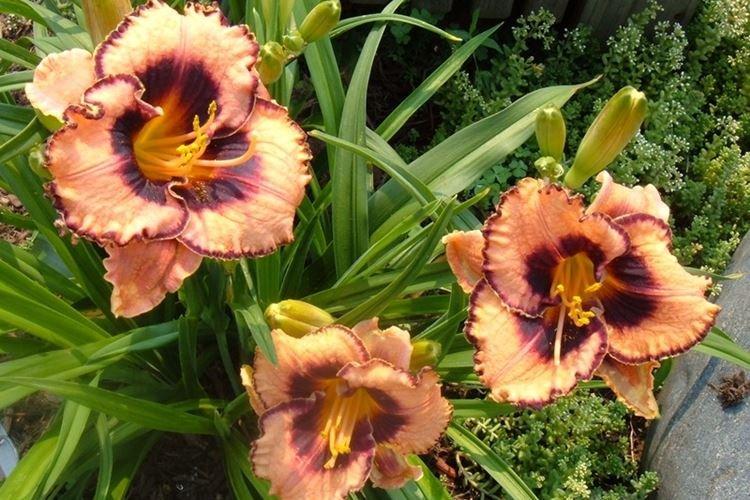
Daylily species
The genus of daylilies includes several dozen varieties, and in most of them there are at least the same number of varieties. The flower fell in love with gardeners and breeders, and is now widespread everywhere. In the gardens, Australian and Dutch hybrids are most often grown.
Orange daylily
It is the most common wild daylily with bright orange flowers up to 12 cm in diameter. It has been known in culture for about 150 years, and during this time it still remains surprisingly popular.
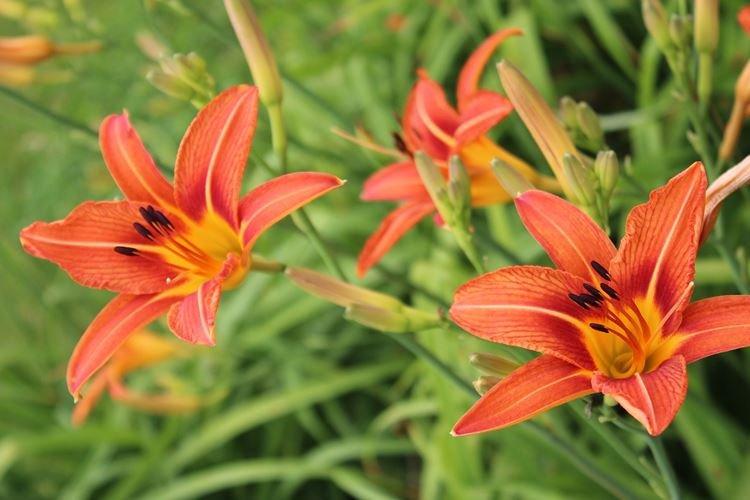
White daylily
Relatively white daylilies include light varieties, in which the white color of the petals turns to yellow. It can be in the middle or border, but it is worth noting that there are no completely white species in nature.
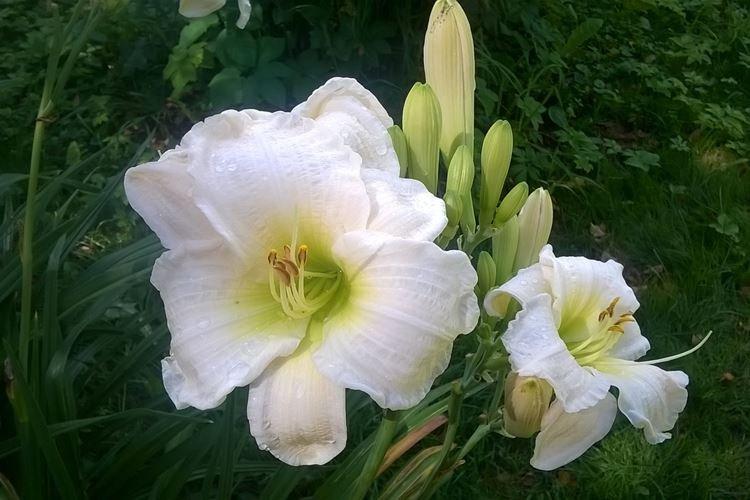
Lemon yellow daylily
This is a rather rare natural species that is found in nature only in certain regions of China. The shape of the flower is slightly different and even more reminiscent of the classic white lily.
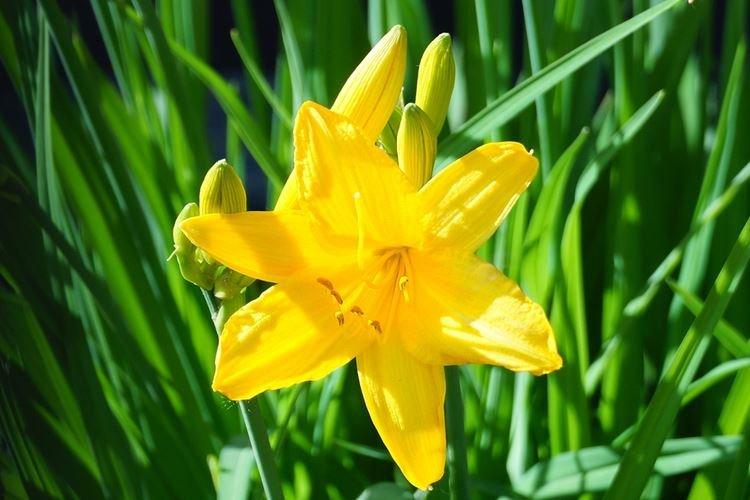
Daylily Double
The flowers of this group are characterized by an additional circle of perianth petals. In fact, these are just double daylilies, although outwardly they look very unusual.
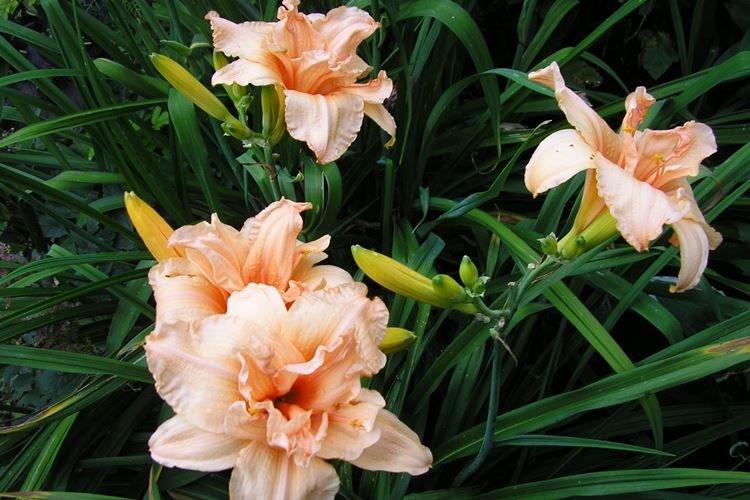
Daylily Dumortier
Another wild variety that is widespread in the Far East is popularly called the "wolf locust". The shrub is quite compact, although it grows up to 70 cm, and the flowers are small for a daylily, up to 5 cm.
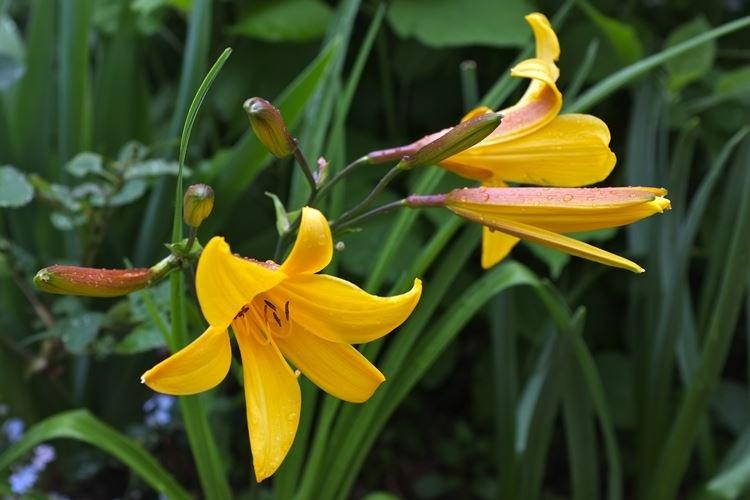
Daylily Helix
An unusual variety with giant slender petals cannot be ignored. A group of daylilies of this shape are called spiders because they really resemble large bright spiders.
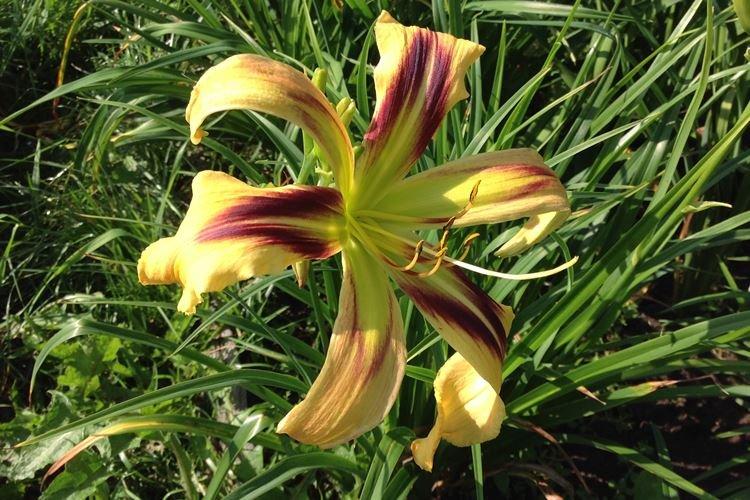
Garden hybrids
This is an extensive category, which includes, without exaggeration, tens of thousands of decorative varieties bred in less than two centuries. Different parameters are used for classification: flower shape, peduncle height, flowering time.
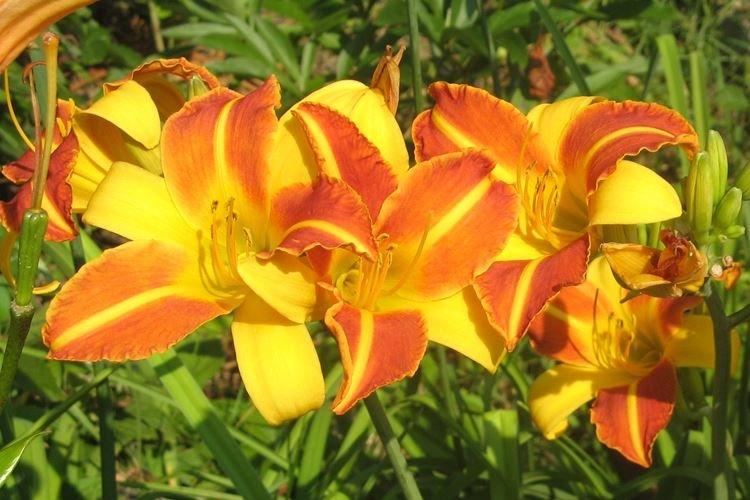
Fragrant varieties
By themselves, daylilies have almost no smell, but the breeders could not ignore this moment and brought out fragrant varieties. Outwardly, they can be absolutely anything - the emphasis here is on the smell.
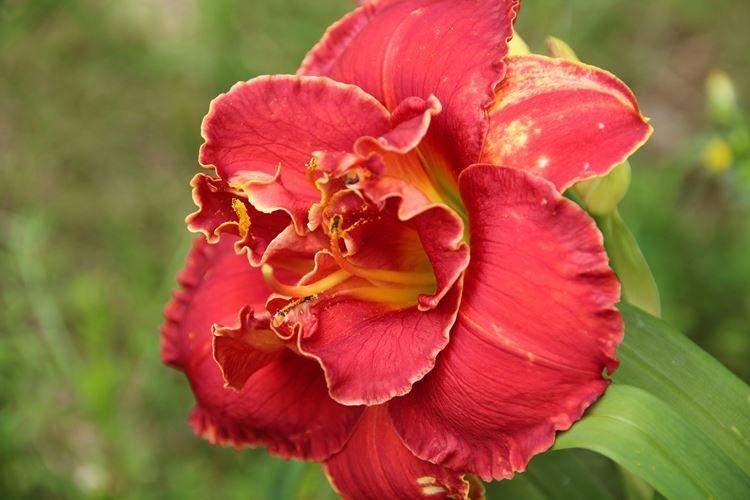
Daylily care
Even beginners can easily cope with daylily seedlings, because with its decorative effect, the flower is completely undemanding. The minimum conditions are quite enough for a healthy flowering flower bed - it does not even have to be watered regularly.
Temperature and lighting
Daylilies are very fond of light and sun, although they also live in the light shade of trees or tall shrubs. In the cool, they bloom later, but bloom longer. At the same time, if there is not enough light and heat, the buds will be faded and weak.
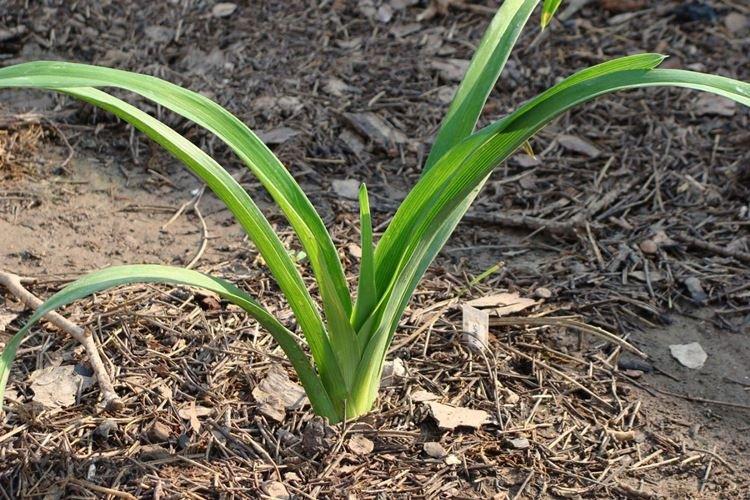
Watering
The daylily does not tolerate frequent watering, so it does not cause trouble even in this matter. He has a powerful and developed rhizome, so the moisture should be at a decent depth. To preserve it longer and not overdry the upper layers of the soil, mulch. Even in a drought, you do not need to water the daylily more than once every 2 weeks.
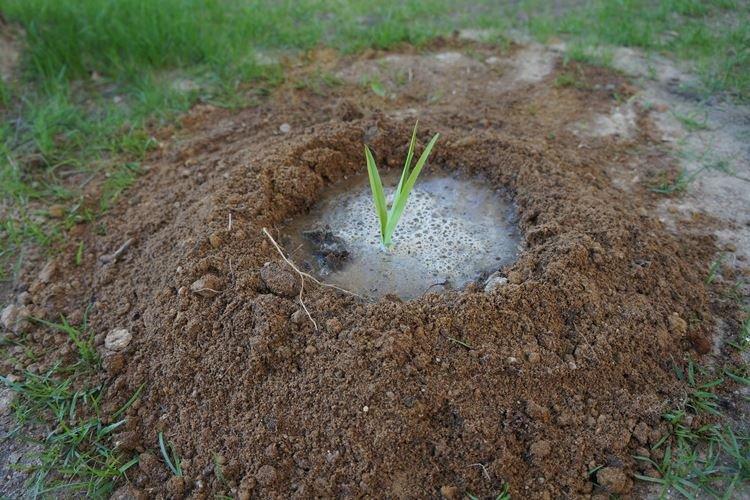
The soil
Daylilies grow in almost any soil and can be grown in one place for years. Except that too swampy areas are not suitable, because these are ideal conditions for the development of the fungus. Scanty sandy soils are easy to fertilize, but the main thing is not to overdo it, otherwise the leaves will grow thickly, and not the flowers.

Fertilizers and feeding
Regular feeding is almost the only thing that the daylily really requires if you want beautiful and bright buds. In early spring, sprinkle long-acting complex fertilizers and a little compost between the bushes. But even more important is to fertilize the plants at the peak of flowering so that the buds are well laid next year.
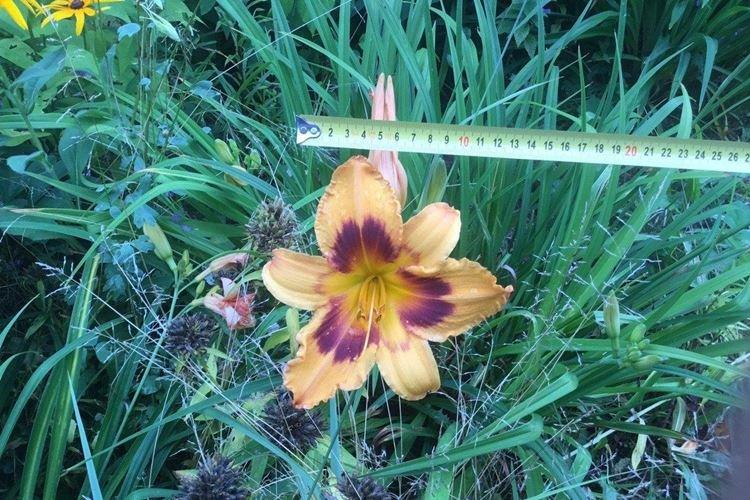
Transplant and reproduction
Daylilies are easy to propagate by seed, but in this case, ornamental varieties do not retain their features. Therefore, the division of the bushes is most often used in early spring after the snow melts. Loose rhizomes can simply be divided by hand, but dense and knocked down ones can be cut with a disinfected knife.
It is recommended to divide old shrubs into sectors in order to leave only young and strong roots. And it is better to exclude the weak and old middle immediately, because it takes root much worse. Young and strong bushes do not even need to be dug out completely, but carefully separated with a sharp shovel.
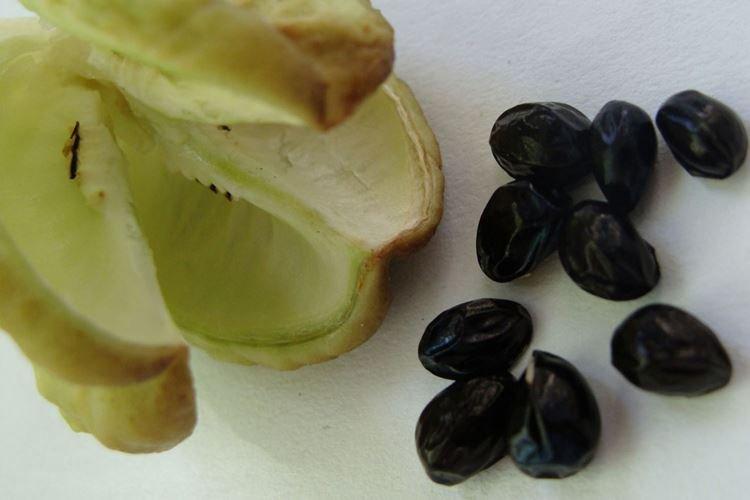
Pruning
After flowering, it is recommended to immediately remove the flower stalks, and throughout the summer - to remove the yellow leaves. At the beginning of spring, you need to prune old leaves to stimulate the growth of young ones. Opinions about wintering differ: someone prefers to cut the daylily almost to the root, while someone leaves dry leaves for additional protection.
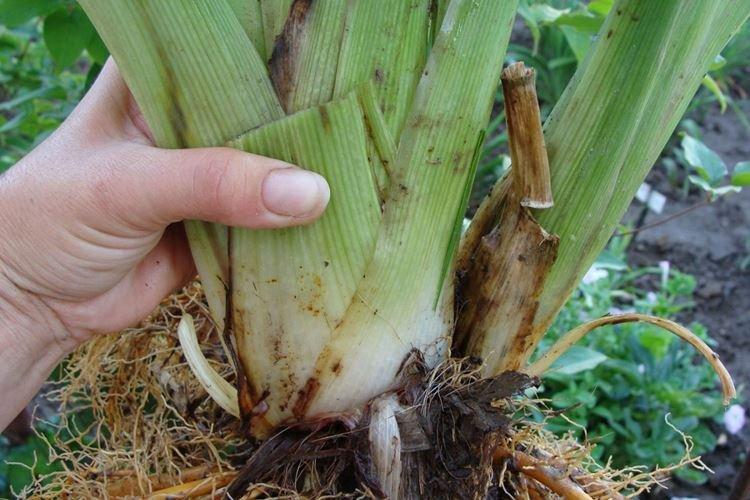
Pest and disease control
Daylilies are almost immune to attacks by pests and parasites. At most, thrips are periodically found, which lay the larvae in the buds and destroy them. Seasonal preventive treatment with insecticides helps here.
The most dangerous daylily disease is root rot, which is most often noticed when the plant dies. But in the early stages, the flower can still be saved if you dig up, cut off all sore spots, treat it with fungicide and potassium permanganate and dry it well. Rust is less common, but it is treated like a common fungus, and for prevention, you can grow a little patrinia nearby.
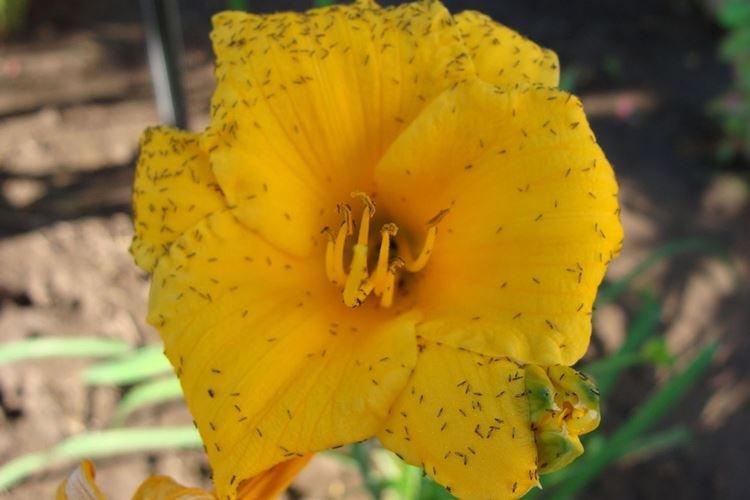
Daylily - photo
The delicate daylily resembles a real flower from a fairy tale, and among the variety of its varieties and shades, you can definitely find an option to your liking!
